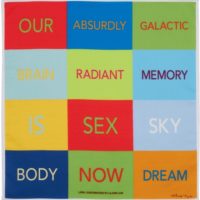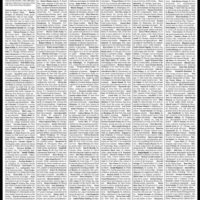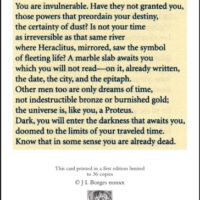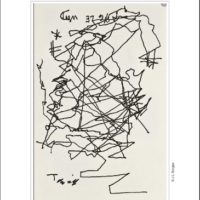Makes me think of … “Summertime.”
The Language + Her Voice + Their Music = Heaven
This is bliss . . . and so is this . . . especially in tough times. MEDITAÇAO & CHEGA DE SAUDHADE (A.C.JOBIM) ANDREA MOTIS Y JOAN CHAMORRO LIVE AT JAMBOREE — Barcelona :: Andrea Motis & Joan Chamorro Quintet Featuring Scott Hamilton [Andrea Motis, voz ,trompeta & saxo; Joan Chamorro, contrabass; Scott Hamilton, tenor sax; Ignasi Terraza, piano & Hammond; Josep Traver, guitarra Esteve Pi, drums.]
Moloko+ Releases Maher’s New Poems in Bilingual Edition
“This is a partial autobiography. The important things are missing.” — William Cody Maher
The collection includes photographs by Signe Mähler. The German translations are by Walter Hartmann.
The poet reads an excerpt from his poem, “Pornography.”
Remembering the Covid-19 Dead in Trumpistan
It’s not just a list of names. As the NYT story says, the loss is “incalculable.”
Coping with the Shitstorm #8
For a high-speed Sunday morning . . . Paul Altman commented on YouTube, “Lennie had the bass and drums recorded, and then using the reel-to-reel technology of that time, slowed them down to half speed, and then recorded the solo as an overdub an octave lower and at 1/2 of the speed released here. Then he sped the whole thing back up by 2X so that the bass and drums returned to their original recorded pitch and speed, but his piano solo was now twice as fast, and an octave higher, than he recorded it at. [Some people think that’s cheating, but] I’m not sure what all the fuss is about. Maybe some people assume that mediocre playing can be made to sound superlative by merely doubling the speed. But it doesn’t work that way. It just ends up sounding like fast, mediocre music.”
New York City Nurse Tells His Frontline Story
Report and interview by The Graduate Center, CUNY: “I thought I was prepared, as a nurse to see a death on the floor. But doing a shift witnessing several deaths is overwhelming,” says Fernand A. De Los Reyes, a Ph.D candidate in nursing studies at The Graduate Center of the City University of New York. De Los Reyes works full time as a staff nurse, caring for COVID-19 patients at Mount Sinai Morningside hospital in Manhattan. He adds: “I am praying that those who protest for immediate opening will not end up in the Thermo King tractor trailer for dead bodies parked behind our hospital.”
Jürgen Ploog, R.I.P.
He died at home in Frankfurt, peacefully, surrounded by family. Jürgen Ploog was 85. “Jay,” the name he went by among close friends, was widely regarded as one of Germany’s premiere second-generation Beat writers. But his narrative fiction—like that of William S. Burroughs, a mentor with whom he was associated—was more experimental and closer to Brion Gysin’s or J.G. Ballard’s than to Jack Kerouac’s or Allen Ginsberg’s.
Jay called his style “cut prose,” an adventurous collage technique developed from the cut-up methods formulated by Burroughs and Gysin back in the late 1950s and early 1960s. He was a gifted visual collagist as well, producing hybrid works in recent years such as Flesh Film, a fever dream of a novella originally published in a digital prose-only edition by realitystudio.org, and subsequently perfected in print by Moloko+.
GC CUNY Keeps the Conversation Going:
Six Fast-Paced Doctoral Presentations on Diverse Topics from Solar Energy to Anti-Corruption Laws
Tune in today—Tuesday @ 7:30 p.m.—for a 30-minute online showcase in TED-style talks.
Coping With the Shitstorm #7
Bach: Brandenburg Concerto No. 6, BWV 1051 | movement i. performed Aug. 10, 2019, at the Norfolk Chamber Music Festival by Shuhan Wang (viola); Bethany Hargreaves (viola); Ole Akahoshi (cello); John Belk (cello); Clare Bradford (cello); Amy Nickler (double bass); Hilda Huang, (harpsichord).
Borges: ‘To Whoever Is Reading Me’
You are invulnerable. Have they not granted you,
those powers that preordain your destiny,
the certainty of dust? [. . .]
Dark, you will enter the darkness that awaits you,
doomed to the limits of your traveled time.
Know that in some sense you are already dead.
Bill Murray Takes a Cue from Nancy
He masks up in his bathtub too.
Famous Last Words
“We are in this together. We are stronger together.”
It’s Covid Time in Times Square and in the not united U.S. of A.
Borges: ‘The Thing I Am’
‘I have forgotten my name. I am not Borges
(Borges died at La Verde, under fire)
Nor am I Acevedo, dreaming of battle . . .
On the Other Side of the Pond, Locking Boris Down
David Eros responds to the U.K. prime minister’s lockdown speech.
Music for All Seasons: Little Richard Meets Vivaldi
Wouldn’t it be grand?
Michael McClure, R.I.P.
Dead at 87, he was foremost a poet, but also a playwright, essayist, and novelist.
‘A Daughter’s Take on the Legend of Nicholas Ray’
Three Rooms Press has just published RAY BY RAY, a combination memoir-biography by Nicca Ray, daughter of the maverick Hollywood director Nicholas Ray, with an introduction by Samantha Fuller, daughter of another Hollywood maverick, the screenwriter/director Sam Fuller. The publisher will present a livestream book launch Saturday afternoon—May 9 @ 2pm-4pm EST — featuring the […]

















